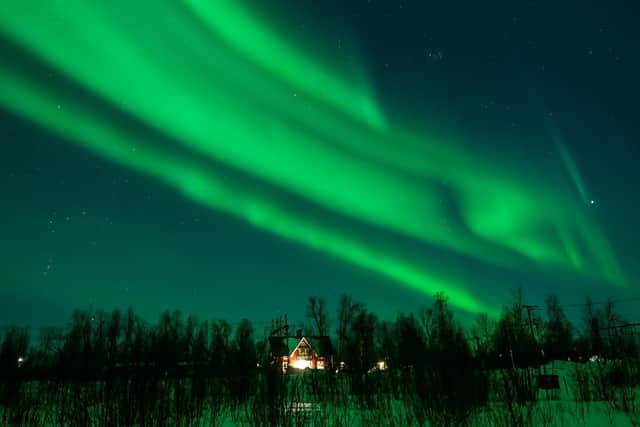Book review: Atoms of Delight: Ten Pilgrimages in Nature, by Kenneth Steven
The poet and author Kenneth Steven had, he says, “a deeply religious childhood”, one that “stemmed mainly from my mother’s own Free Church background.” That being the case, you might reasonably expect his new book about pilgrimages to take an overtly religious approach to the subject. The book’s subtitle – “Ten Pilgrimages in Nature” – might even put some readers in mind of the poet-priest Gerard Manley Hopkins, whose early, sprung-rhythm raptures concerning the wonders of the natural world always seem to link back somehow to his faith. “The world is charged with the grandeur of God,” he confidently asserted at the start of his 1877 sonnet, “God’s Grandeur”, and pretty much everything he clapped eyes on during this wildly optimistic period of his life seemed to confirm that view.
Steven’s relationship with his subject, however, is a lot more complicated – and a lot more interesting. He does not continually catch glimpses of the Almighty in finches’ wings, in skies of couple-colour, in trout acne, or in the fiery plumage of apparently self-immolating kingfishers. Instead, in spite of his religious upbringing – or perhaps because of it – he offers a warmly inclusive and decidedly secular series of essays about what it means to make a pilgrimage in the early years of the 21st century.
Advertisement
Hide AdSteven’s early encounters with religion were, by his own account, awful. “I sat through many a Free Church service in the Highlands as a child,” he writes, “and almost inevitably I’d emerge grief-stricken and terrified, certain that I... was on my way to perdition.”
“Sundays,” he adds, “were a grim march through several services” and “afternoons where I wasn’t allowed to read anything but the Bible or a religious book of some kind.”
These experiences left Steven’s faith “battered and damaged, but not lost” – and so, when he writes of pilgrimages, he doesn’t write with the certainty of a young Gerard Manley Hopkins, but with an awareness that journeying to a place in order to find some kind of connection, healing or solace can be of value to believer and non-believer alike. The pilgrimages described in this book, he writes, “can be understood equally well by those who do not have faith in any deity, but who simply cherish our planet, nature and humankind.”
Several of the pilgrimages he describes are journeys back in time, as well as journeys from A to B. In “Serpentine” he returns to St Columba's Bay on Iona – a place he used to visit as a child on holidays with his parents, and now somewhere "I feel I become a child again." In a beautiful image, he describes a windswept walk there as like having all the labels and responsibilities we accumulate as adults blown away: "It's akin to having little scraps of paper blown out of your pocket as you walk and battle against the wind. You feel small in that wind, truly small, and in a way you're blown back into childhood."
Similarly, in “The High Lochs” he revisits in his memory the lonely sites of mountain expeditions with his parents – places where his mother would set out to catch a trout while he made a fire and his father went off looking for rare birds. One of the things he remembers most clearly about these mountainside adventures is the silence, “like a thin and beautiful layer of ice, something you didn't want to break.” It’s also in this essay that he muses on the phrase that gives the collection its title. On hearing the song of red throated divers, he writes: “Impossible to try and describe it, to tie it down with bare words. It’s something only that can be carried, forever, somewhere in a place in the heart. It’s what the great Highland writer Neil Gunn would have described as an ‘atom of delight.’”


Perhaps the closest Steven comes to a conventional idea of pilgrimage is in “The Santa Crux Well”. Situated on a moorland plateau near Dunkeld, the well in question is all-but forgotten now, but in pre-Reformation times it was a site of major religious significance, with an annual May Day pilgrimage drawing thousands, many hoping to be healed by its waters. The chapel that used to mark the spot is long gone, and the site is tricky to find: "nothing more than a deep hollow with a pool.” However, Steven notes that the water still tastes "clear and lovely, and somehow it reached a very deep place." He also speculates about whether it might one day be possible for people of all faiths living in Dunkeld to join together in a new May Day pilgrimage to the well, something he believes would be "a putting aside of all the petty things that divided us and a simple but profound re-enactment of the journey of faith that united us."
Advertisement
Hide AdThe final pilgrimage in the book is by some distance the shortest, with Steven and his wife simply walking out into their Perthshire back garden to enjoy the Northern Lights. However, it’s also the essay which best sums up his all-embracing approach to the concept of pilgrimage: “We’ll make it again in the winters to come,” he writes, “not knowing if we’ll be rewarded or not. But for me the pilgrimage is not about the certainty of finding, it’s about making the journey – whether short or long – and about all that’s found in that journey.” Amen to that.
Atoms of Delight: Ten Pilgrimages in Nature, by Kenneth Steven, Saraband, £8.99
